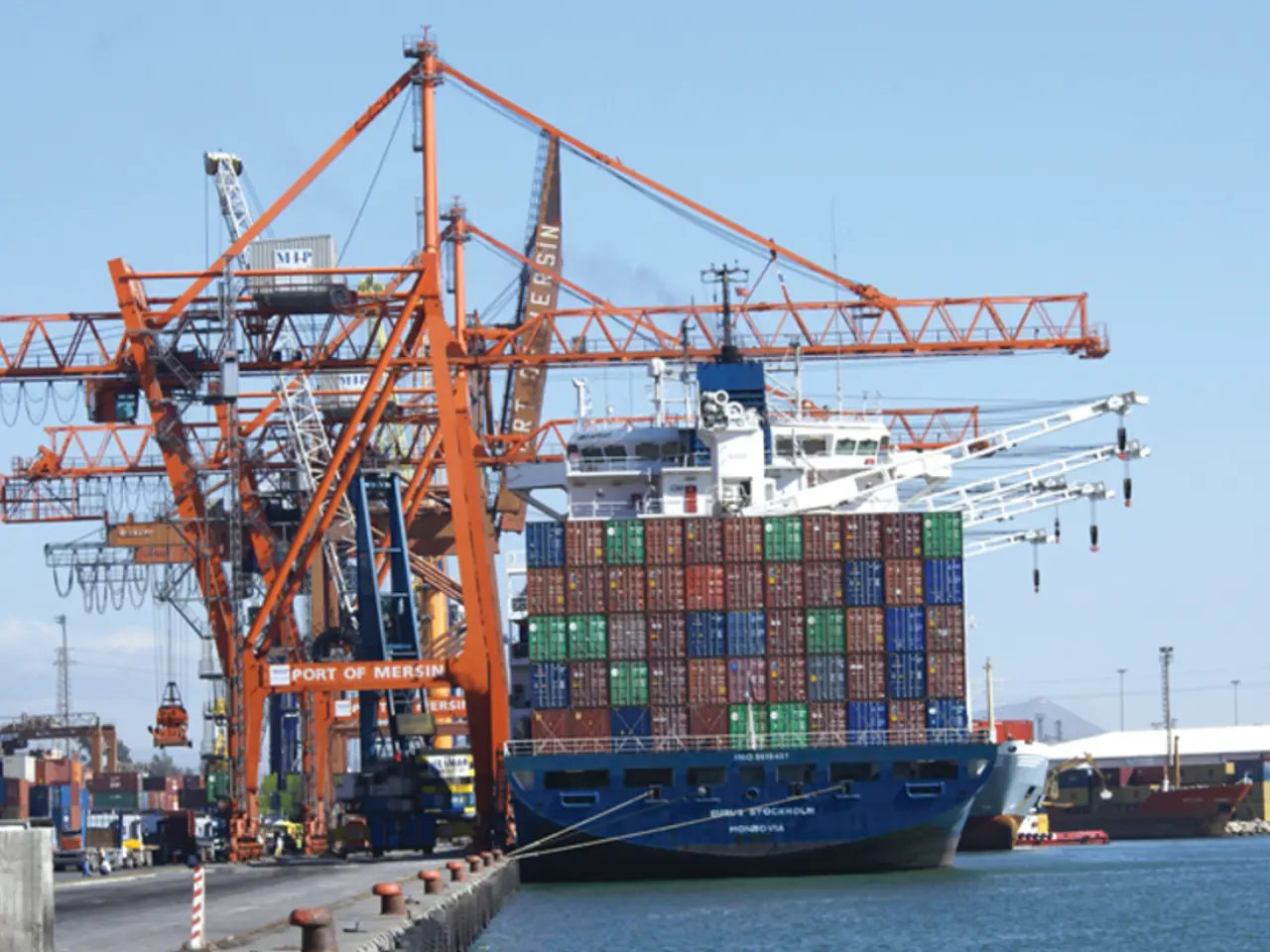AI Paves Way for Streamlined Port Operations
=============================================================
Artificial Intelligence (AI) is revolutionizing the maritime industry by creating digital twins—virtual replicas of ports and their operations. These digital twins enhance port management, improve operational efficiency, and enable real-time simulation, predictive analytics, and resource optimization.
Key benefits of AI-powered digital twins in global port operations include:
- Bottleneck Prediction and Congestion Management: AI models integrated into digital twins forecast congestion and bottlenecks before they occur, allowing ports to take proactive measures to maintain smooth workflow and reduce waiting times for vessels.
- Operational Optimization: Digital twins simulate port terminal activities such as crane movements, container stacking, berth scheduling, and yard allocation. AI algorithms optimize these operations by dynamically adjusting workflows, leading to reduced operational costs, improved productivity, and more flexible management.
- Predictive Maintenance: AI analyzes equipment data to predict failures and schedule maintenance before breakdowns, which minimizes downtime and enhances the resilience of port infrastructure.
- Safety Enhancements: Virtual simulations allow testing of operational procedures without risk, reducing accidents and human errors. AI also monitors traffic and worker conditions to reinforce safety protocols, helping protect workers and equipment.
- Environmental and Sustainability Gains: AI-driven digital twins monitor environmental impacts such as emissions and fuel usage, aiding ports in achieving sustainability goals and complying with regulations.
- Integration with Big Data and Real-Time IoT Sensors: Digital twins combine data from cameras, radar, satellite, and IoT devices to create comprehensive, real-time models. AI processes this data to provide actionable insights and automate decision-making in complex port environments.
Notable real-world applications of AI-powered digital twins include:
- The Port of Hamburg’s AKIDU project uses AI-powered digital twins to optimize handling of complex cargo types, enhancing workflow efficiency and sustainability.
- The Port of Algeciras integrates AI and digital twins for traffic flow optimization, smart bunkering, satellite-based diagnostics, and environmental intelligence, exemplifying a data-driven smart port initiative.
- Large ports like Antwerp-Bruges developed digital twins fed by hundreds of cameras and radars to eliminate operational blind spots, increase safety, and coordinate activities effectively.
In conclusion, AI strengthens digital twins as a critical platform for the transformation of global ports into smart, resilient, and sustainable hubs. The global market for AI-enabled digital twin logistics solutions is rapidly expanding, reflecting high adoption driven by operational efficiency and environmental imperatives.
Moreover, structured upskilling programs ensure workers can interpret AI outputs, manage automated systems, and respond decisively in complex scenarios. The future of port management lies in the seamless integration of AI, digital twins, and human expertise.
Read also:
- Long-Term Prescription Drug Impact on Brain Function
- Diabetes Management during Pregnancy: Keeping Tabs on Blood Sugar Levels and Lifestyle Adjustments
- Life Expectancy with Interstitial Cystitis: Exploration of Research, Treatment Methods, and Additional Information
- Signs of Excessive Negativity in Your Surroundings: Recognizing and Managing Them








